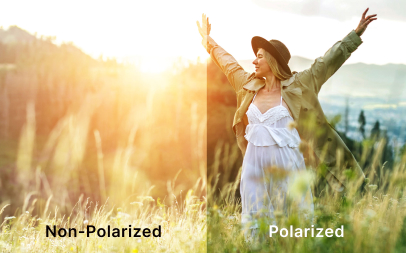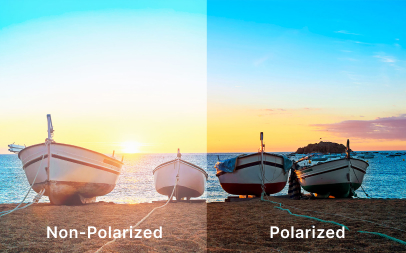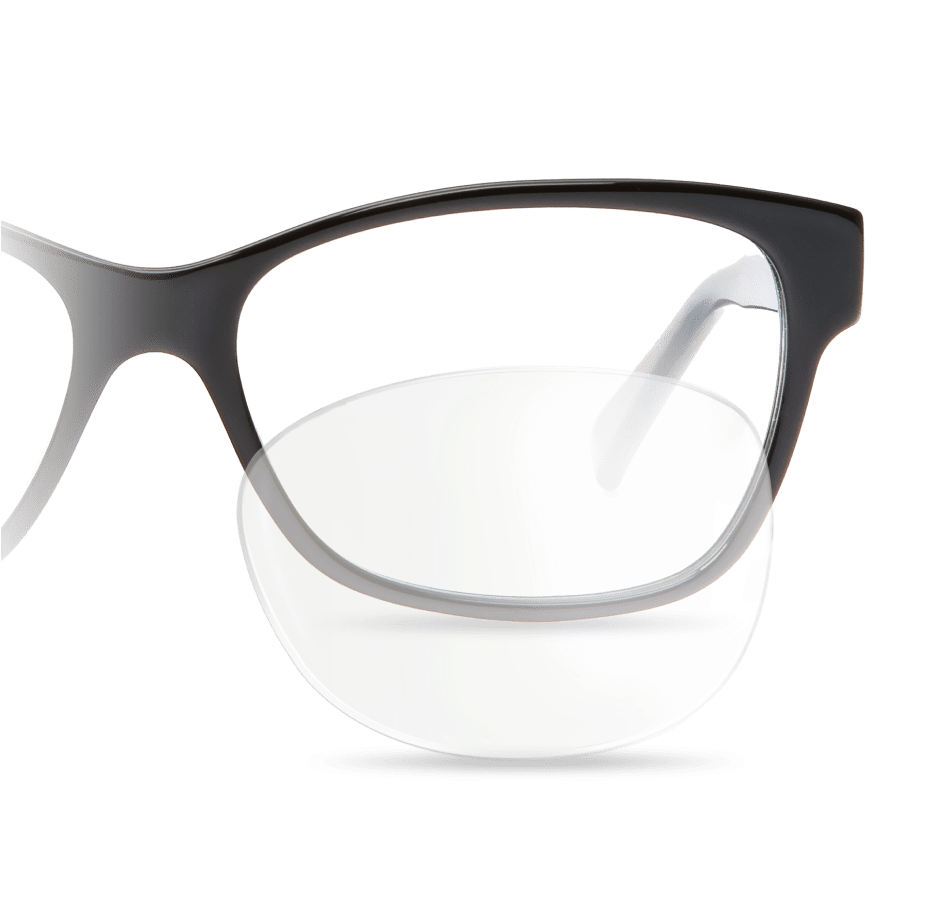Polarized lenses

WHY CHOOSE POLARIZED SUNGLASS LENSES
It is all about protection. And that’s where the right kind of prescription sunglasses come in.
Polarized lenses are sunglasses they are about 75-80% dark all the time and are used for any outdoor activities. Polarized lenses come in either a dark grey or dark brown lens option. However, you are not able to tint over a polarized lens.

Polarized lenses have special filters that reduce horizontal reflection of light commonly known as a “glare.” unlike tinted lenses, there are two main colors used in polarized lenses, brown and gray. The density of polarized lenses is 75% to 80% of light transmission, which means that Polarized lenses block between 75 & 80% of harmful, glaring light from reaching your eyes. The color darkness (density) cannot be changed on a polarized lens it only comes in one darkness level. Please keep in mind, the color you choose really has no bearing on the protection you get, it is more of personal preference. Polarized sunglass lenses Minimize eye strain and fatigue, improve color saturation, and contrast and reduce the effect of UV-A and UV-B rays by 100 percent. Here is a list of benefits of the Polarized lens options.
Clarity of vision improves.
These lenses enhance the clarity of vision and provide greater contrast for objects near the ground and in the water. Fishermen swear by polarized lenses as they can fish for hours without their eyes tiring due to the glare off the water. Fishermen also report being able to “see through the glare” of the water at the shoreline to spot fish easier.

Enhanced comfort.
Without the constant battle with the glare, your eyes can be in a more relaxed state and are able to see objects more easily in brighter conditions.
Minimized eyestrain.
Eliminating the need to adjust to the glare from different reflections reduces eye strain and discomfort. Less glare, less fatigue, more comfort. This may seem like a small victory, but it’s one worth mentioning.
While tinted lenses are clear lenses with a pigmented dye in them. They do not offer UV and glare protection like a polarized lens does but they are more fashionable. There are a variety of tint colors available, with the most common being brown or gray. The color does not influence how much protection you are getting but is more based on personal preference. Brown offers a warmer hue, giving more of a contrast type of lens, which can distort certain colors. Gray is more neutral and natural to look through, resulting in a truer appearance of color.
When considering the density of the tint however, it does affect the protection you will get from your sunglasses. Tinted lenses can be made lighter or darker according to an individual’s preference. Lighter densities will not offer as much protection as darker densities. For example, a lens tinted at a 75% gray will have more protection than the same gray lens tinted at a 25% density. A density of at least 75% is recommended for outdoor use and maximum sun protection.



























 Select a topic
Select a topic